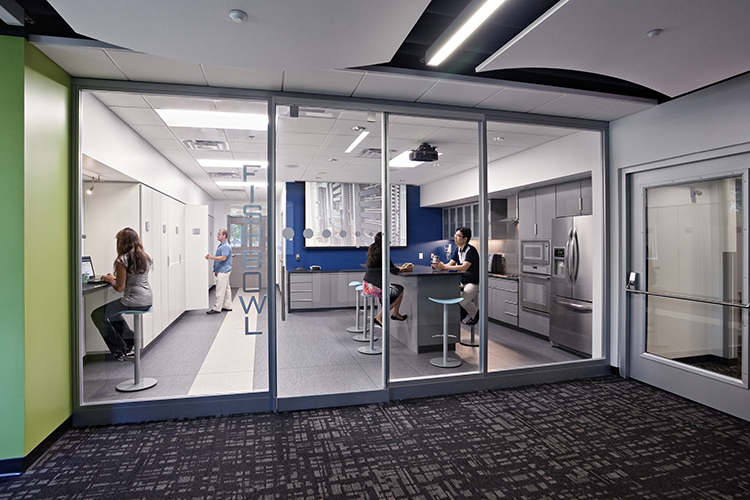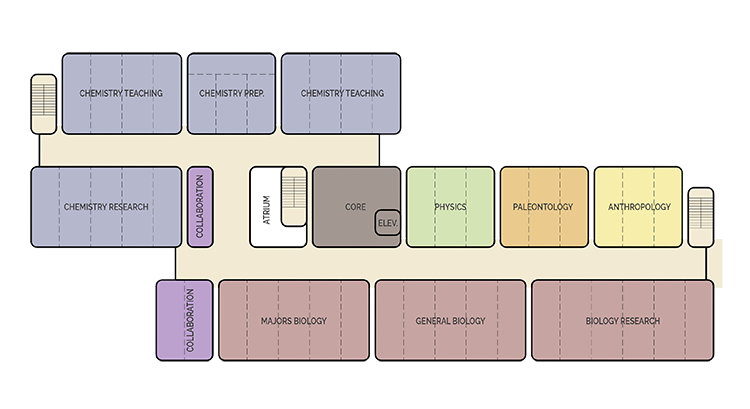Meet the teaching lab of the future. It's a key to attracting the brightest minds and keeping them engaged.
In the Venn diagram of life, somewhere near the intersection of intelligence, obsession, and social ineptitude, you will find The Nerd. He or she will have discovered at some point along their voyage a penchant for a particular field of study…a desire to learn more…to dig deeper…to boldly go where no one has gone before. You might know one. You might be one.
For the record: I do NOT use the term “Nerd” pejoratively in any way, as I count myself among their ranks. If you doubt the current Nerd currency in the world, ask yourself: would you trade lives (or at least bank accounts) with Mark Zuckerberg, Jack Dorsey, or Neil DeGrasse Tyson? One thing is certain: these days, Nerddom is cool.
So it’s no surprise these are the types of students (and faculty) most sought-after by colleges and universities. They bring with them a focus, prestige, and the potential for drawing in large sums of grant money. Academic institutions are highlighting the sciences and scientists alike, showcasing these envelope-pushing researchers and their discoveries.
So how do we, as designers, help universities celebrate the sciences?
Simple: we showcase them in ways they’ve never seen before.
Close your eyes for a moment and picture a laboratory. You’re likely seeing a dark, windowless box, filled to the brim with beakers bubbling over bunsen burners, glassware off-gassing wildly into dingy fume hoods, heaps of “stuff” choking every square inch of bench space, manipulated by disheveled chemists shuffling around in dirty off-white lab coats, or something close to that.
That's the old lab.
The new lab, the lab of the future — the lab we’re designing today — is a much-needed break from that stereotype. Schools are using these new learning and teaching environments to attract the best and brightest. These new labs are designed to be flexible enough to accommodate today’s pedagogies and technologies, while still allowing for reconfiguration and repurposing as new technologies and equipment are developed. Transparent walls and doors showcase the cool science being done. Classrooms themselves are often designed as laboratories, so the students themselves have more opportunities to demonstrate and participate in the teaching. Creating this kind of transparency is critical to enticing learning and good science.

Manufacturers are catching on, too, and are now offering more and more creative alternatives as “standard” equipment and casework.
Does location matter to the new lab?
Yes! Location is a critical factor in creating a flexible, interdisciplinary research space. It takes a great deal of careful planning to determine not only where these new spaces must reside in a facility, but also where they must reside on campus.
Many universities have caught-on and are co-locating once separate departments in new buildings. Creating small “mini-campuses” for the sciences can be an effective tool, as there are often resources that can be shared. Sometimes it is a costly piece of equipment (MRI’s, Linear Accelerators, etc.) that creates the focus on the new lab; sometimes it’s simply the presence of an emergency generator. The reasons vary wherever we go. But the common thread is the same: meticulous planning is necessary to finding the right home for these labs of the future. Pre-design and programming efforts must engage campus faculty, administrators, maintenance departments, students, and others, to glean all of the information necessary to make informed, positive decisions.
What else makes the new lab special?
So, we’ve figured-out where this new science lab or science building must go, and we’ve figured-out how to make it sexy and cool, now we must figure out how to make it easy for people to see and use. What good is a transparent science lab if you can never find it? The magic happens when we deliberately locate these spaces in active environments; when a researcher or faculty member can, quite literally, stumble across some research being done by a colleague.
Interdisciplinary environments happen organically, but the space must be purposefully designed to facilitate the collision or creation of these organic collaborations. Give the faculty and students space to showcase their work. Give them a diverse array of flexible spaces that will support multiple modes of collaboration and learning. Locate these spaces where they want them to be, where they will be seen by others. Do this, and the level of the bar in the sciences will be raised.

Lab buildings, once stoic masonry bunkers, are now bright, vibrant marketplaces. But instead of goods being exchanged there is an exchanging of ideas: a cross-collaboration between and amongst disciplines that helps build better and more creative ideas. Better ideas equals better research equals better enrollment equals better funding equals, you name it.
In many cases, the sciences have become the standard-bearers for collaborative studies at universities, and the model is being repeated across departments of all disciplines. Whether it is for simulation or engineering; nanotechnology or physics; chemistry or biology; geology or geography; teaching or research; or all of the above; the science lab is now the true campus workhorse classroom.
Yes, the science lab is the place where Nerds will flourish.

Education Market Leader
Ben leads DesignGroup’s education practice. He has focused his 13 year career on exceptional design and planning for academic facilities. Ben has significant experience designing student centered environments including health science facilities, laboratories, over 5,500 student housing beds, and has assessed and planned 30 million square feet of higher education campuses. Ben is an active participant with the Society of College and University Planners.
He is currently working on a lab renovation project for Ohio University.
